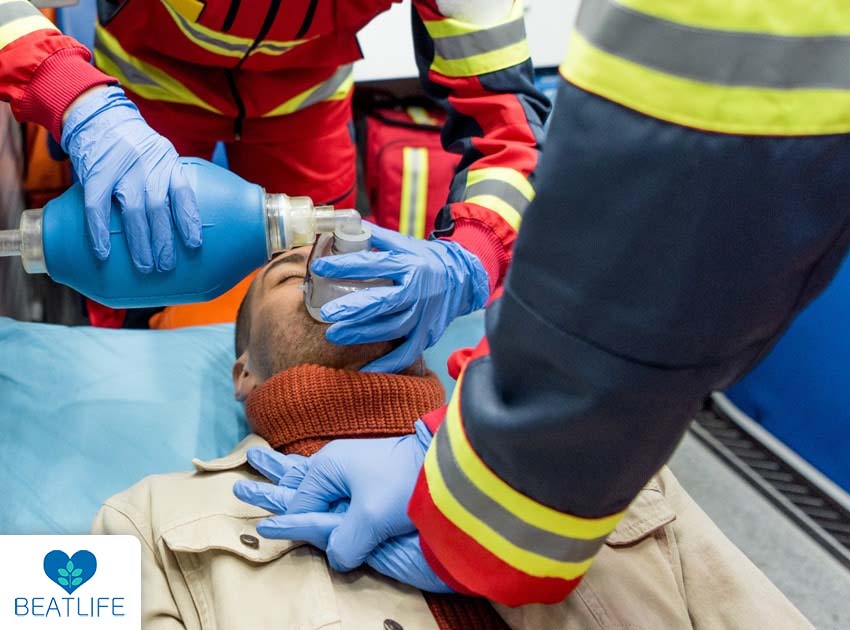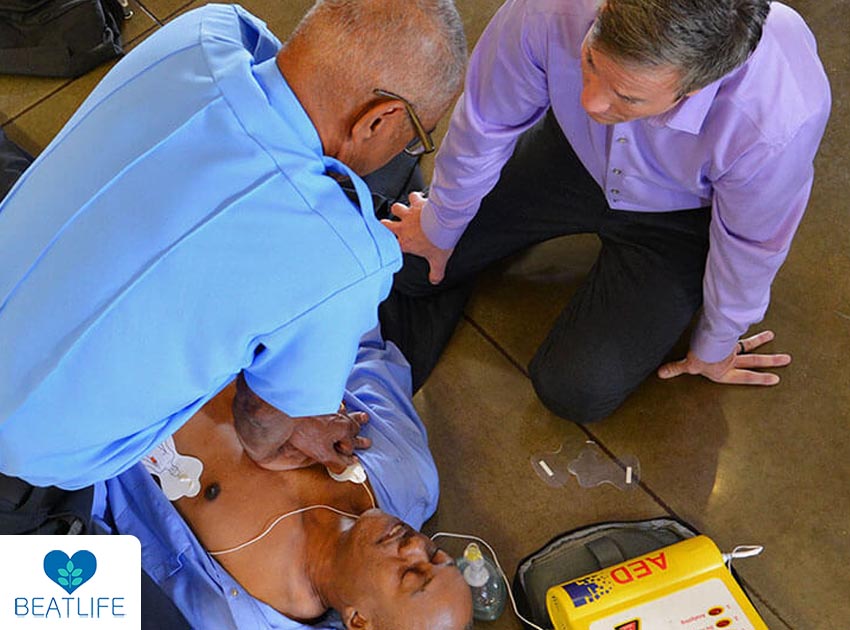Cardiopulmonary resuscitation (CPR) is a life-saving measure that can dramatically increase a victim’s chances of survival. CPR is a procedure used to revive a victim of cardiac arrest whose breathing and heartbeat are deceased. When performing CPR, the quality and the effectiveness of performance are critical factors to consider.it is very important to Optimize real-time CPR performance is for enhancing these factors. Nonetheless, training, expertise, and experience are necessary for conducting CPR effectively and efficiently.
In this text, we go over some to optimize real-time cpr performanc. Employing up-to-date techniques and utilizing innovative technology such as BEATLIFE CPRMETER, a CPR feedback device by BEATLIFE, have a great impact on the results of emergency circumstances.

Contents
Why to optimize real-time cpr performanc?
During emergencies, immediate CPR can be the difference between life and death. High-quality CPR consists of proper compression depth, rate, recoil, and minimizing interruptions. However, it can be challenging to constantly maintain these standards, particularly in high-pressure real-life emergencies. This is the point when real-time CPR performance optimization becomes essential and even life-saving.
Utilizing CPR Feedback Devices
Using CPR feedback devices is one of the most effective strategies to optimize real-time cpr performanc. The use of technology in CPR feedback devices, like CPRMETER made available by BeatLife, has completely changed CPR instruction and practice.
These gadgets guarantee rescuers perform effective CPR by giving them real-time feedback. These devices quantify the depth and rate of compression and offer real-time feedback, allowing responders to instantly modify and enhance their performance and giving them the ability to act quickly and intelligently.
Improving CPR performance in real time also requires standardizing CPR protocols. Ensuring that medical personnel performing CPR adhere to identical guidelines and procedures can potentially enhance efficiency and effectiveness.
CPRMETER can be employed in CPR training courses; Since, evaluation of performance and identification of areas for improvement are facilitated by this CPR feedback device.
Using Advanced and High-quality Equipment
Using high-quality equipment is crucial to maximizing the effectiveness of CPR. Among these are automated external defibrillators (AEDs), which are devices that deliver electric shock to the heart to restore and maintain its regular rhythm, and CPRMETER, which are CPR feedback devices. Anyone with basic training can operate an AED and CPRMETER with ease.
Proper Training and Certification
Enhancing the effectiveness of CPR in real time depends not only on the equipment utilized but also on the knowledge and experience of the person performing the CPR.
CPR training guarantees that rescuers are knowledgeable about the most recent standards and methods for administering CPR.
It also helps people become comfortable and proficient in using CPR feedback devices during emergencies by not just brushing up on the information but also familiarizing them with their use.
Stress Management and Mental Preparedness
Even the most skilled rescuers can deliver a poor CPR under pressure in an emergency. Addressing stress management and mental readiness is necessary to maximize real-time CPR performance. Methods like mental rehearsal, stress coping strategies, and mindfulness can greatly improve rescuers’ ability to perform at their best under stress and pressure.
Remember performing CPR can be stressful and physically demanding, so it’s critical to maintain calm and focused. Enrolling in a CPR course can also boost your confidence in your capacity to deliver this life-saving technique.

Communication and Team Coordination
When more than one responder is involved, efficient coordination and communication are essential. This entails effective communication both before and during CPR procedures, as well as clear communication of roles and responsibilities.
To optimize real-time CPR performance, each team member must understand their specific role and collaborate well with others. Drills and training sessions that simulate real-life emergency situations can help to achieve this synchronization.
Public Awareness and Accessibility to CPR Training
Optimizing real-time CPR performance isn’t just about the skills. It involves increasing public awareness and accessibility to CPR training. The more individuals who are trained in CPR, the higher the chances of someone being present in an emergency situation to perform this life-saving technique.
Challenges and Solutions in CPR Training
Real-time CPR training faces various challenges that require thoughtful solutions to enhance its effectiveness. One significant challenge is the dynamic nature of emergency situations, where responders must rapidly adapt to evolving scenarios. Ensuring realistic simulations that mimic the unpredictability of real-life emergencies is crucial. Another obstacle involves maintaining engagement and motivation during training sessions, as prolonged or repetitive simulations may lead to a decline in participant focus.
Solutions involve incorporating immersive technologies like virtual reality, providing diverse scenarios, and emphasizing the importance of sustained attention. Additionally, addressing the psychological stress that can accompany real-time CPR scenarios is essential. Creating a supportive learning environment, offering mental health resources, and conducting debriefing sessions can help participants cope with the emotional aspects of the training. Overall, a holistic approach that combines technological innovation, diverse scenarios, and psychological support is key to overcoming the challenges in real-time CPR training.
Can virtual reality be effective in real-time CPR training?
Virtual reality (VR) has emerged as a promising tool in revolutionizing real-time CPR training. By immersing participants in simulated environments, VR offers a dynamic and realistic learning experience. Trainees can practice chest compressions, rescue breathing, BEATLIFE CPRmeter, and AED usage in virtual scenarios that mimic real-life emergencies. This technology allows for repeated, hands-on practice without the constraints of physical mannequins, fostering muscle memory and confidence. VR simulations also provide the opportunity to expose participants to diverse scenarios, including challenging situations that may be rare in traditional training. While it doesn’t replace hands-on practice entirely, the integration of virtual reality into CPR training can significantly enhance skills, boost preparedness, and contribute to more effective life-saving interventions when facing real emergencies.
In conclusion
A variety of factors are involved in the multifaceted approach to optimize real-time cpr performanc. Every element is critical to improving CPR results, including the use of CPR feedback devices like those offered by BeatLife, ongoing training, efficient teamwork, stress management, and public awareness. The ultimate objective is to guarantee that all people, whether they are bystanders or trained responders, have the knowledge and resources needed to deliver effective CPR in an emergency.
Reviewed by Dr Jamshidi Mohammad Reza

